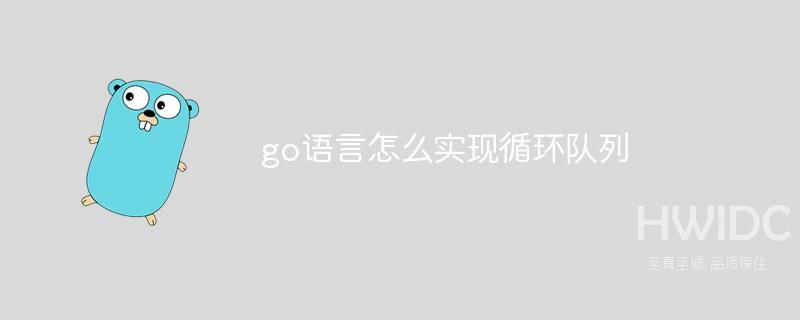go语言怎么实现循环队列
go语言实现循环队列的方法:1、创建一个go示例文件;2、用“CustomizedQueue”函数定义队列数据结构;2、用“NewQueue”函数初始化队列;3、用“IsFull”函数判断队列是否满了;4、用“IsEmpty”函数判断是否是空队列;5、用“GetQueueLength”函数获取队列元素个数;6、用“DeQueue”和“EnQueue”函数判断数据的出队和入队。

本文操作环境:Windows10系统、go 1.20版、dell g3电脑。
队列是计算机中比较常用的数据结构,该结构的特点是先进先出,类似我们买东西排队的时候,先到先买,不能插队。接下来我们用Go实现一个循环队列的数据结构。
go语言实现循环队列方法:
// CustomizedQueue 自定义队列数据结构,并且约定保留一个空闲的位置不能被插入
type CustomizedQueue struct {
data []interface{}
maxSize int
front int
rear int
}
// NewQueue 初始化队列
func NewQueue(size int) *CustomizedQueue {
var result = &CustomizedQueue{}
result.maxSize = size + 1
result.data = make([]interface{}, size+1)
result.front = 0
result.rear = 0
return result
}
// IsFull 队列是否满了/*
func (s *CustomizedQueue) IsFull() bool {
return (s.rear+1)%s.maxSize == s.front
}
// IsEmpty 判断是否是空队列/**
func (s *CustomizedQueue) IsEmpty() bool {
return s.data != nil && s.rear == s.front
}
// GetQueueLength 获取队列元素个数/**
func (s *CustomizedQueue) GetQueueLength() int {
return (s.rear - s.front + s.maxSize) % s.maxSize
}
// DeQueue 出队/**
func (s *CustomizedQueue) DeQueue() (interface{}, error) {
if s.IsEmpty() {
return nil, fmt.Errorf("队列为空")
}
result := s.data[s.front]
s.front = (s.front + 1) % s.maxSize
return result, nil
}
// EnQueue 入队/**
func (s *CustomizedQueue) EnQueue(item interface{}) error {
if s.IsFull() {
return fmt.Errorf("队列已满")
}
s.data[s.rear] = item
s.rear = (s.rear + 1) % s.maxSize
return nil
}登录后复制【文章转自阿里云代理商 http://www.558idc.com/aliyun.html 欢迎留下您的宝贵建议】
